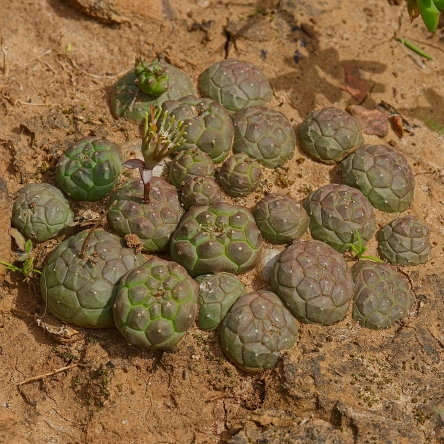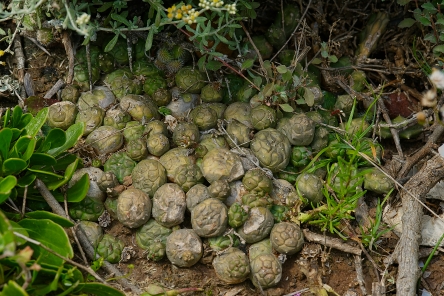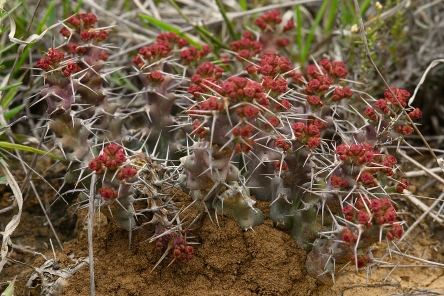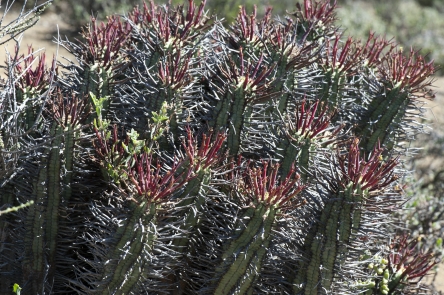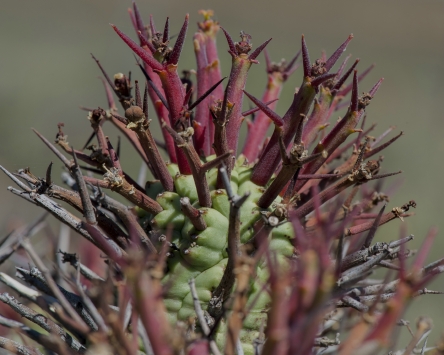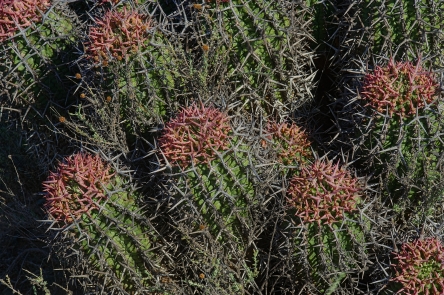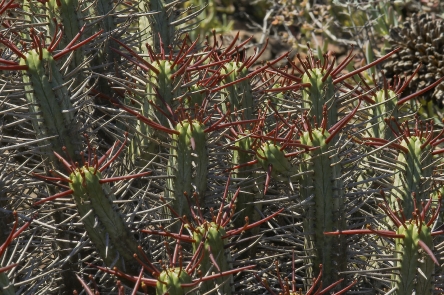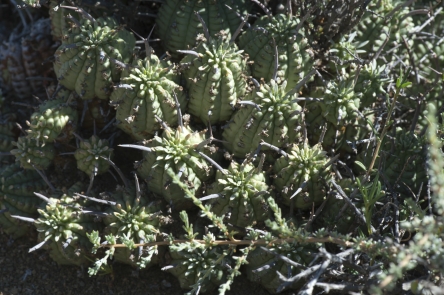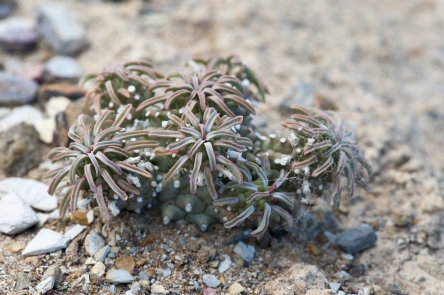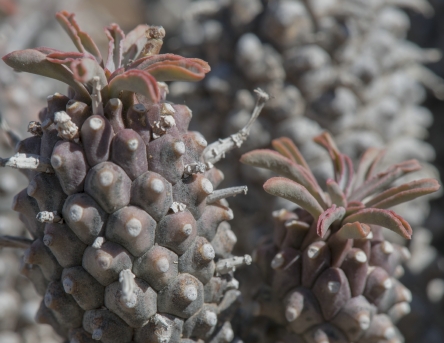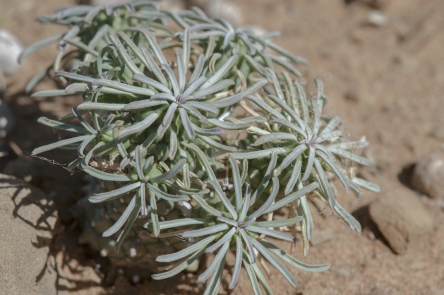One of my Dutch friends, Wim Alsemgeest, regularly organises trips trips to South Africa for people interested in succulents. When I first looked up his website (www.agaves.nl) a couple of years ago, I was surprised to find a picture there captioned “This is how Euphorbia horrida grows in the Seweweekspoort” (for non-South-African readers: a poort is a passage through the mountains). The picture, taken in November 2006, shows a group of 8 columns on a very steep slope.
Because of the slope, it seemed impossible to get near to the plants and therefore I tried to find other plants, hopefully at a more accessible spot.
Although I drove through the poort dozens of times since, it took me a few years before I was successful. This may seem strange, because the plants sometimes grow relatively near to the road and are often quite substantial, but they are very difficult to see unless the light and the angle of view are just right (I’m trying to protect my reputation as a plant hunter here, as you will no doubt understand).
The plants that I spotted first were just as inaccessible as the one I had seen in the picture, so the satisfaction of finding them was mixed with the disappointment of not being able to get a good shot of them. On a later trip with two friends from Calitzdorp, we found more specimens, this time on the other side of the road, but as this also was a rather steep slope, I did not even try to get up there.
In the beginning of this year I was visited by two Belgian plant friends, who told me about a new species of Euphorbia that had been found in the Seweweekspoort not long before. After some discussion it dawned upon me that perhaps we were taking about the same plant that had eluded me for such a long time and we decided to visit the poort once more to try and see what was what. We drove to the place where the so called Euphorbia horrida grew and I was appointed as volunteer to climb the same slope that up to now had seemed too steep to me.
After struggling up for a while through rather dense vegetation, I decided to take a little rest and ponder the meaning of the expression “an uphill battle”. I took off my heavy photo rucksack, put it in a safe place and sat down on a sturdy rock. When I had gathered enough courage to continue, I turned round to get my equipment and found out that I had been almost sitting on a small specimen of the elusive Euphorbia (picture 1).
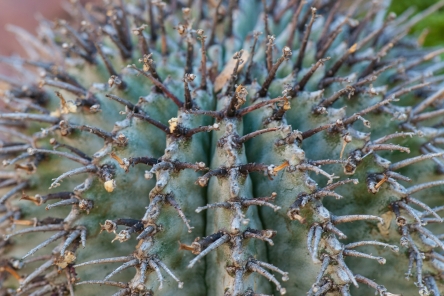
Another small plant growing nearby
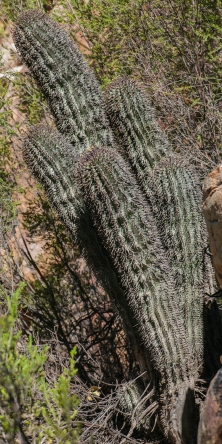
A few meters higher up, hiding behind a big rock and invisible from the road
After taking some more pictures, I came to the conclusion that the plants I had seen from the road were too high up and did not promise any better pictures.
One question had not been answered yet. What was this “new species of Euphorbia” that was supposed to grow in the area? For some reason I had missed an observation published on iSpot on New Year’s Day this year. The moment I came across this publication, it became clear that it discussed the same taxon that I refer to in this post. Rather than repeating all the information given there I give you the link to it (www.ispot.org.za/node/176721).
Whether or not these plants really deserve a varietal name I do not know, but they are certainly beautiful as well as interesting.



